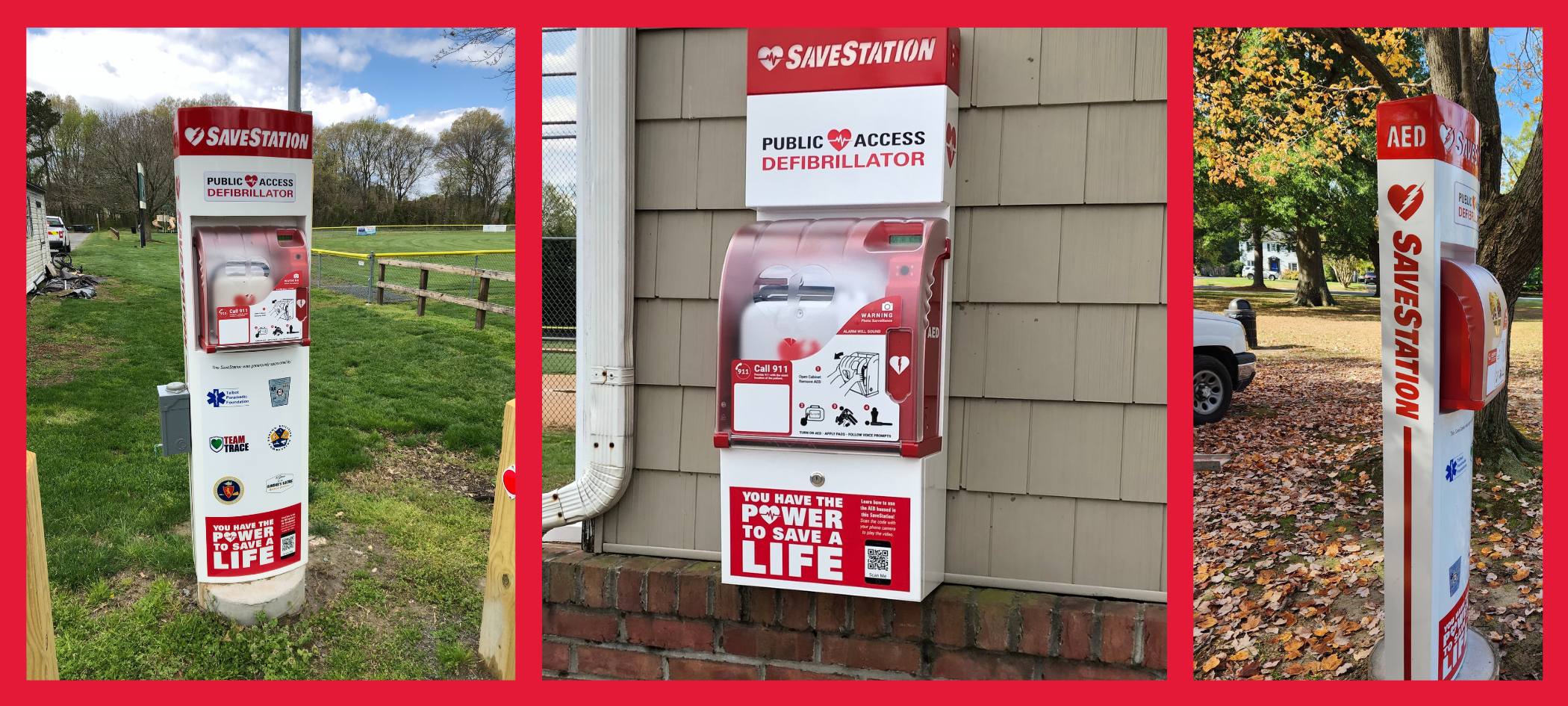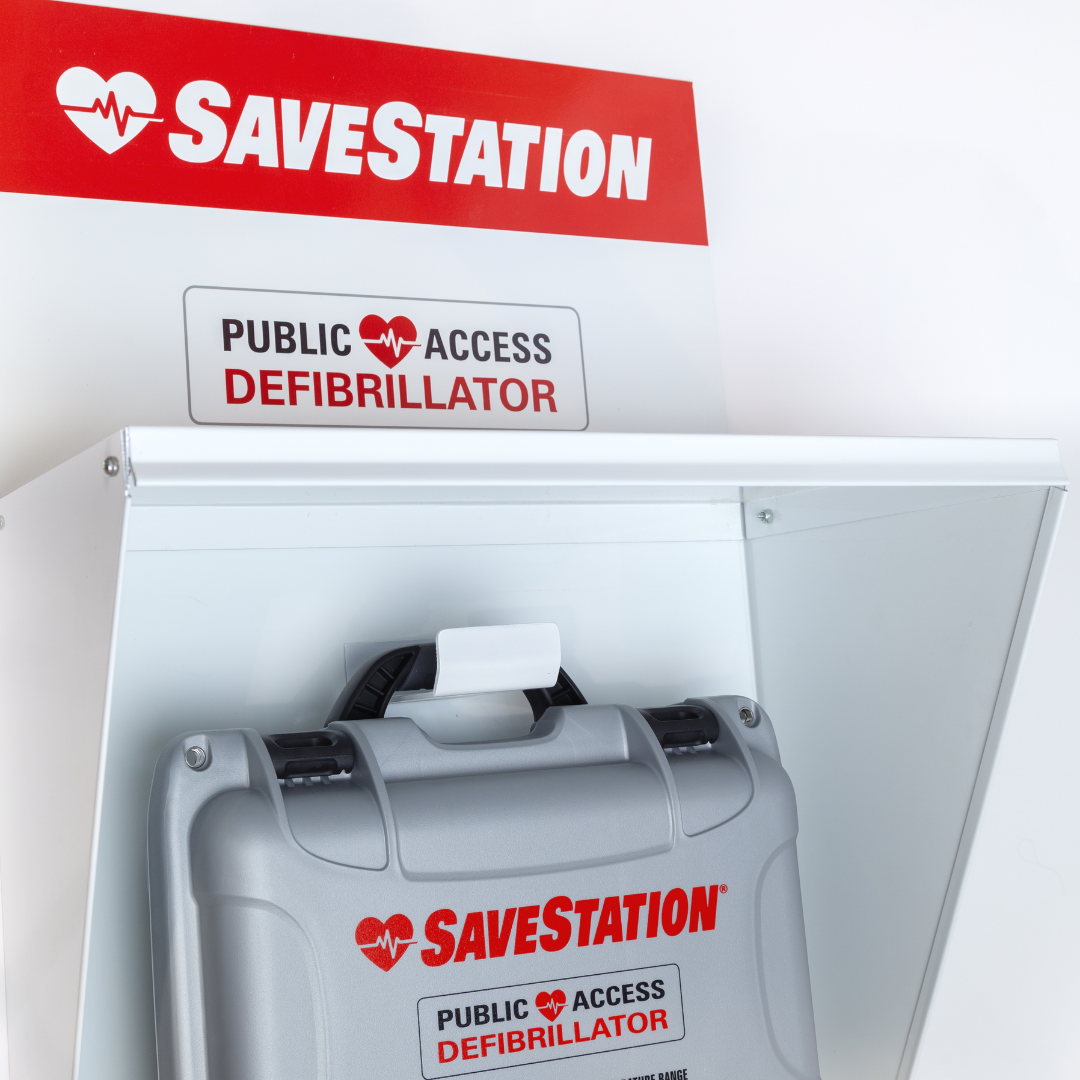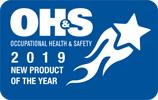In 2000, the Talbot Paramedic Foundation (TPF) implemented “Operation Save Heart”, their countywide public access automated external defibrillator (AED) program. The program was so successful that it was recognized as the premier Public Access Defibrillator program in the United States by the International Association of Fire Chiefs in 2001. Since then, it has continued to evolve as technology has emerged that allows AEDs to be stored outside and become accessible 24/7.
Read more about Talbot County’s SaveStation Project here.
Talbot County and SaveStation are in alignment with a joint commitment to providing access, awareness, and education for AEDs. To expand their program, and provide 24/7 access to AEDs, Talbot County has now placed six outdoor SaveStations for their 38,000 residents, with plans for many more outdoor cabinets.
We sat down virtually with Kevin Knussman of the Talbot Paramedic Foundation to hear more about their outdoor SaveStation program – and what other communities can learn from their experience.
Q. What is the history of the Talbot County AED Program and what role has SaveStation played in it?
The Talbot Paramedic Foundation already manages a large public access AED program with over 220 AEDs available throughout the community. And this number continues to grow every year. Through that program, we became aware of SaveStation and this opened a new venue for the placement of the AEDs. Being able to place them outdoors has made them more accessible, and the public is now more aware of what they are, what they look like, and when and how to use one.
This was an ambitious project, so we partnered with another foundation – Team Trace – who were interested in doing something similar, although with a broader focus and wider geographic area.
In 2021, we placed three SaveStation Towers at North Easton Park in the parking lot, the gazebo and at the lacrosse soccer field. As well, we put a SaveStation Wall Mount at the concession stand. These are all highly trafficked areas of the park so the AEDs inside the SaveStation cabinets provide protection for a large number of visitors. They were also strategically placed to fit with our gold standard of a bystander being able to get to an AED and back to the patient’s side within three minutes from anywhere in the park.
The following year, we placed two more SaveStation Towers at Idlewild Park; one next to the gazebo and another at the playground. There is also a display model for awareness and training at the Talbot County Department of Emergency Services.
Q. What does TPF have planned for the future of the SaveStation program?
We are committed to placing more SaveStation in the community and we currently have 20-25 additional locations scoped out. A lot of them are public parks that have large congregations of kids playing sports. Where most people gather, the goal is to meet the gold standard of having AEDs accessible within three minutes. However, some of the parks are very rural, so we may have to jettison the idea of complete geographic coverage because of how rarely people will be there. Next up is a SaveStation Tower at Veterans Memorial Park in Trappe, followed by three placements in another small town in the county.
We also have 120 indoor public access AEDs coming up for replacement and one of the requirements we’re trying to incorporate is that businesses will have to provide their own SaveStation cabinet. This is important for the public to easily recognize the AEDs. These businesses are also required to get employees CPR and AED trained to be part of our AED program.
Another thought is that the school system in the state of Maryland has AED and Emergency Action Plan (EAP) legislative requirements. Talbot County wants all cabinets at schools to be SaveStations so everyone knows exactly what to look for. This is critical to what we’re trying to do. An example would be having a SaveStation mounted on the wall in the Nurse’s office, a SaveStation Tower outdoors at the sports facility, and a mobile SaveStation case with an AED inside, if one needed to be portable. This is part of the future and success we envision for the program.
Q. What message do you have for other communities looking to implement a similar program?
One of the main concerns we had at the beginning was vandalism. I will say that we don’t have a long track record yet, but the oldest outdoor SaveStation has been sitting out for over a year and no one has bothered tampering with it. We’re confident that the AED is secure and protected because the SaveStation is alarmed and has built in remote monitoring features and photo control that give us full visibility of the AED. As soon as the AED cabinet door is opened, and if the AED is removed, an alert will be sent and someone can be there to respond within minutes.
Q. Have you been able to get a lot of support in the community and from local stakeholders?
The Talbot Paramedic Foundation has been able to collaborate efficiently with many of the local agencies. We work closely with the Department of Emergency Services and volunteer fire companies. This has included approvals from the towns to participate in the program, and assistance with the SaveStation installations and getting electrical running to the unit. Fortunately, the foundation has a good reputation and support we can count on if we hit a stumbling block. All of the AEDs in the program are maintained by the Department of Emergency Services, which includes AED checks, and battery and pad replacements.
“We’re not just excited, our community is excited about this program. It is widely recognized in the community. And SaveStation is a big part of that.” Kevin Knussman, Talbot County Paramedic Foundation
We are changing how sudden cardiac arrests are handled at every step. Now, our 911 communication specialists are trained to talk people through the administration of CPR and the use of the AED. And the technology in the AED itself has also transitioned to talk people through using it. It has been really exciting to watch that change.
Q. What do you do to celebrate and generate public awareness when an installation is complete?
The foundation has established SaveStation as a priority in our community, and with that we’ve attracted more funding and awareness. We haven’t had the opportunity to do a big ribbon cutting event just yet, but we have received some great local media coverage that has helped us to get the word out about the project. We’ve sent out press releases and have been interviewed about the initiative by local radio stations and an area TV station.
We have also had six documented saves using AEDs in the last 1-2 years. These have helped people understand the life-saving importance of creating a cardiac safe community.
Want to turn the SaveStation spotlight on another community? Email media@savestation.ca to share your story.





